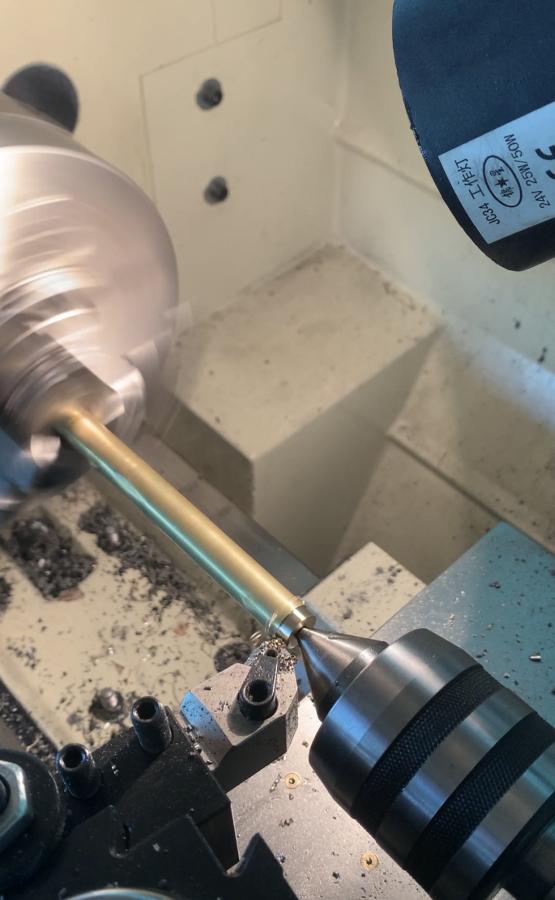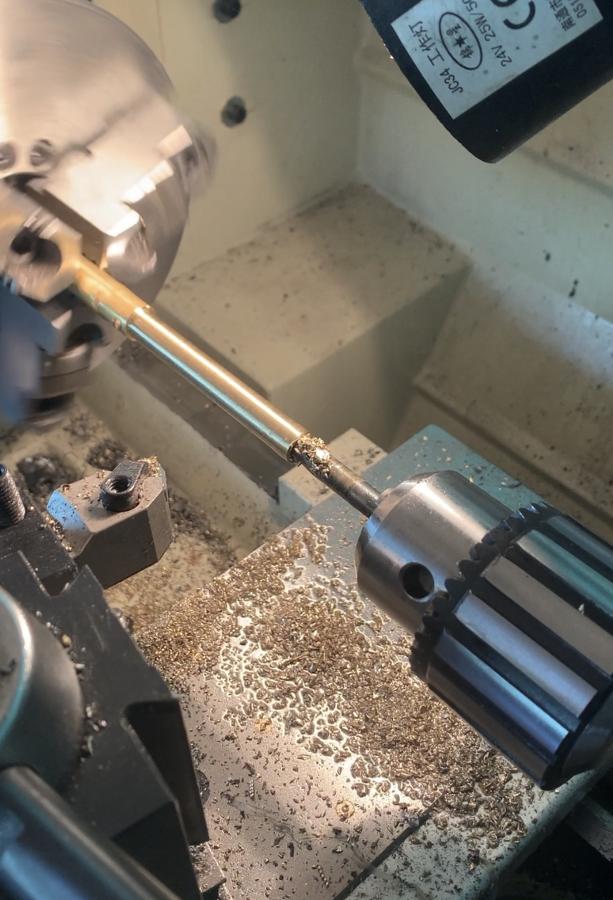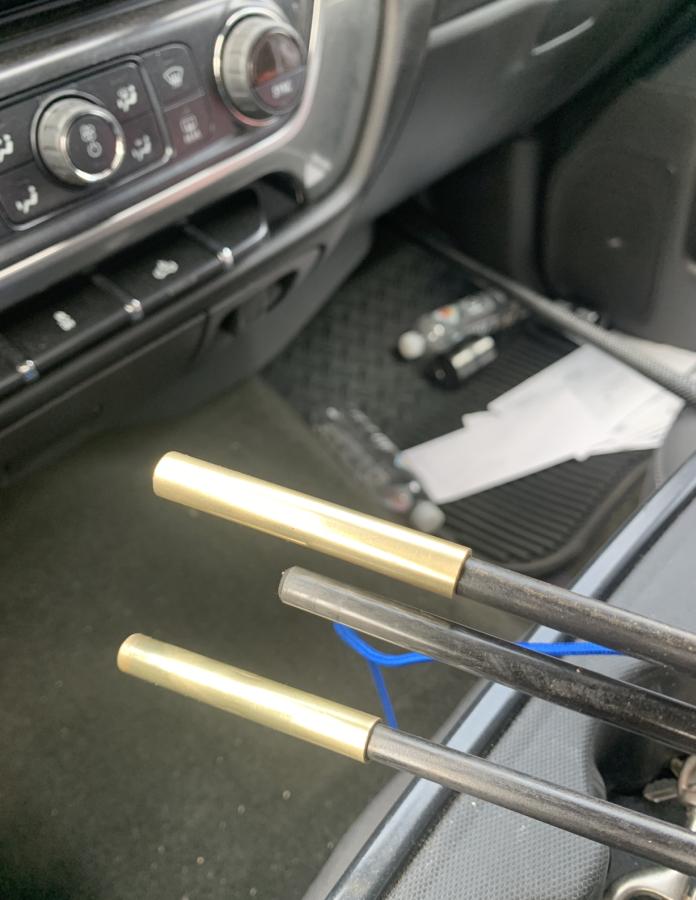This is just pure funny.
When I was a kid, my parents gave me a copy of “the Nantucket Kite Man”s book on kites. I seem to remember his name was Al Hartig, or something like that. This is really stretching my memory. Anyhow, my mom (bless her heart and her ancient foot-powered singer sewing machine!) made me a passable but slightly too heavy delta-wing, that I spent many happy hours by myself with, dancing on the updrafts along the slopes to the causses. Notable incidents were three:
1) a hawk came to investigate the kite, then started flying around it, trying to get it to play
2) a French Air Force Mystere jet came screaming low and I swear it nearly hit my kite. I used to fly on a long reel of linen twine and 500-600 feet was not out of the question; military jets fly low, too! Fortunately nobody ingested an engine-full of hardwood dowels and cotton
3) I tied the line around my foot and dozed off in the sun. That was how I found out that I snore with my mouth open – I got sunburned tonsils.
I will state my claim, here, that flying kites is a fantastic thing to do with kids.* You cannot avoid learning things and having adventures – even if it’s learning to climb trees. That kite is probably still in my parents’ attic, I bet. We Ranums would never dispose of a perfectly good kite. Fast-forward to when I was in the mid 1980s, running across the campus to the gym for iaido/kendo class, and some kid was flying a kite. [I was in the army, then reserves in parallel with college, so at this time I had just gotten out of basic training and AIT and was in really good shape] But it was not a kite like I had when I was a kid – this thing danced in the air. It spun, swooped low and boomed horizontally across the field, then rocketed up. My old kiter’s eye immediately figured out what I was seeing: this kite had to have 2 lines and could be steered. I immediately went hunting for a kite. Google did not exist, then. There was a kite store, Into the Wind in Washington, that I had walked by before, so the next time I was in town, I checked out what was available. The kid behind the counter told me that the 2 line kites are “not for beginners” and I had to tell him that the first time I had flown a kite was probably 20 years before he started his existence. Anyhow, I left with their catalog, called an 800 number (no online shopping!) and UPS dropped off a 2 line delta with a 6-foot wingspan. That was “big” in those days.
My old kite was hardwood dowels and cotton; this thing was rip-stop gore-tex, nylon, and glass/fiber hollow spars with aluminum components re-purposed from archery gear. In retrospect, I think the whole structure was made of arrow components. Anyhow, wow, that was a fun kite! It got lively in a stiff breeze.

Google image search returned a picture of exactly the same color scheme and model “vintage hawaiian spin-off” as my old delta
So, when Hurricane Hugo rolled through in 1989, I took the big delta out to the soccer field and launched it in maybe 30-40mph winds. Whee! What a freakin’ blast! I could yank on the handles and jump 10, 15 feet into the air and get dragged 20, 30 feet downrange. Then, I spun the kite into the ground trying to unwind it (I remember all this like it was yesterday; these are very vivid memories) I was trying to re-unwind the control grips when a helpful jogger yelled something at me – I waved – couldn’t hear a damn thing over the wind – and he threw my kite back up into the air. Because the lines were wound and uneven in my hands and I didn’t have both hands on the controls, I tried to hold onto the kite and it blasted straight up, turned over, and arrowed straight into the ground. BAM! That was the end of my day flying: the carbon fiber strut down the middle had completely disintegrated to powder.

google image search found the same pattern and size as my flexi. 10′ rainbow. booya!
I took another break from kites but, because I was on their mailing list, I got a catalog with … what the hell is that thing? A flying air mattress called a “flexifoil.” I still have the delta and the flexifoil, I just didn’t get pictures of them for this posting. Besides, they look like kites. The flexifoil I got is 10 feet end to end, 2 feet deep, two control lines (kevlar) The leading edge is a carbon/fiber rod that disassembles into 3 pieces with brass ferrules, and that’s about it. The way it works – in case you don’t know – is the air pressure against the lines fills cells in the fabric body, stiffening the kite. The fabric body is a wing. The control lines attach on either end of the leading edge rod, and you fly the kite. And, in a stiff breeze, it’s a motherfucker. It screams like a banshee and tears through the air at around 50mph. My dogs used to chase it until they were exhausted and I put it away because I was afraid they’d heat stroke.
Because it breaks down into a nice package, I sometimes took the big flexifoil on work trips. Europeans glare at you when you launch a kite like that, so I restricted my excursions. I flew it in Saskatchewan in the winter, for maybe 4 minutes, until the Canadians came out to voice pity for me. I flew it at Laguna Seca in the beach winds, and it was a great time. Then, I took it somewhere else and discovered it was missing the brass ferrule that holds it together. No biggie? No: it’s not a standard dimension. So I said “fuck it” and I was too much the busy executive, anyway, so the kite went into its bag, then down into the store room, and got a bit moldy and funky. But I was thinking the other day, that I should take it out and show Anna what a dangerously stupid kite-flying session looks like. So I washed it, re-wound the kevlar lines, took a 1/2″ piece of brass stock over to the lathe…

Your first operations are almost always to face off the end of your work-piece (make a cut across the front that renders it flat) then center-drill a hole dead center, that you can put a center in, to um center the work-piece. Joking aside, the center is that big piece of heavy steel on the lower right – it’s got ball bearings so it spins easily, but it is concentric with the tail-stock and holds the work-piece so there’s no flex or vibration at all.
The next step is what you see: a surfacing pass. Here I have the lathe spinning fast (1200rpm) with a carbide cutter tool, and the auto-feed engaged. My job is to watch the cutter munch down the length of the rod, and disengage the auto-feed before the tool hits the chuck [That’s called “crashing a lathe” and it’s a sign that you no longer have a piece of precision machinery] Everything has to be close to everything else, because that way there’s less room for things to vibrate, which causes chatter, which causes shitty surface finish. So you can see, above, that the cutting tool is really snug against the tip of the center. Thus, everything is stressful because you’ve got all these things close together, spinning fast, and you really really really don’t want to lean over and have a look at what’s going on.
I should mention a thing I forgot: you can pop the center out of the tail-stock and put in a drill chuck. That’s useful for holding a center drill because it’s also precisely concentric with the axis of rotation. This is the miracle of a lathe.

Once it’s turned down to exactly the diameter of the part being copied, it’s time to bore it out with a drill. What’s really interesting about this is the mechanical properties that are at play. The bar is concentric and more or less perfectly balanced around the center-drilled hole. So a drill goes right in, and is perfectly centered. More or less. Then, you just spin the lathe up (200rpm) and lubricate your drill, and slowly advance the tail-stock. Because the pressure/contact point is the two wings of the drill, the pressure is straight away from the tail-stock, so there’s not really any tendency for it to deflect, unless some bastard crashed your lathe and the ways are bent so the entire lathe is not straight any more.
Joe Pieczinski, a professional machinist who does really good explanations of operations, did one video about making thin-walled cylinders with the lathe. As long as you’re not using a boring bar (which is a single-point cut and presses the tube to the side, crumpling it) you’re pressing against the solid part of the bar, which gets cut away leaving the thin wall.
I did this exercise because:
1) Lathe!
2) Practice!
3) I can!

They don’t look the same size because of how they are positioned in the photo, but they’re exact to +/- a few thousandths. I buffed the new one with scotch brite and emery paper to make it look like the original, which will have changed some dimensions and ruined concentricity. A little tap with a ball hammer to crimp it down and the job is done!
Then, I took the kite down the the fairgrounds in Clearfield, there being a spanking breeze of about 13-15 mph. I assembled and rigged the kite, paid out the lines, and forgot how to solo launch the thing. After feeling stupid for a while, trying to flag down one of the kids bicycling around (their parents having told them “do not go near weirdos with kites! catholic priests are OK, though.”) I gave up and broke down the kite.
But – wait. What’s that? The rod is stuck. It’s jammed against … yeah, it’s jammed against the “lost” ferrule, which had been sitting there all along, waiting for me to blossom into full stupidity. Now I have a spare. Of course, I crimped them on so I can’t swap them or lose them. I suppose I could cut the ferrule up and make it into a wrist-thing, except metalworkers don’t wear wrist-things.
Lathe!

* I hate kids.
Into The Wind kites is still in business and they’re great. They sell all the cool-ass components, too. So, if you’re reasonably crafty, you can put together a kite like my old delta in a day of sewing, gluing, epoxying, swearing, etc. But kites are pretty cheap.
Don’t get me started about the international community of kite fliers. There are Indian kite-artists who duel with deliberately imbalanced paper/stick kites and try to cut eachother’s lines. There are Japanese festival kites that are flown by teams of drunken Japanese, on great big manila hawsers. The Chinese are making some amazing flying octopuses and dragons that inflate from the wind, and are towed aloft with a discreetly trained flexifoil, etc. Kites were used as target drones in WWI, camera drones (they sucked because you have to be upwind) etc.

I love the intensity with which the Japanese do things. Except for when they are doing imperialist slaughter. Fortunately, like the Russians, they have learned peaceful ways.
Turns out that clever kids came up with a good way of solo launching a foil, which I never knew about. (turn it around and yank it back so it flips over, into the wind) – the old way I used to do it was pay out the lines, pinch them between my fingers, let the kite take wind, and slowly slide the line out until you reach the handles. Kevlar: do not do this without gloves, it will cheese-wire your flesh and if you wrap it around your bare hand, you can lose a finger or worse. Power kites can jerk 200-400lb on those lines, and with that behind a thin piece of kevlar, you can mutilate yourself “it’s just a toy!” tell the ER staff.
Oddly, I tried to fly a power kite on linen line, because the kevlar is nasty scary. The linen line stretches so much that it absorbs a lot of the energy from the kite. It is No Fun.
These are acceptable things for you to give a kid. You just have to get them to understand the kevlar thing, and that “if things go haywire, just let go with one hand and if that doesn’t work let go with the other, too.”
Crazy surfer d00ds realized that a kite plus a boogie board is a great water-borne and air-borne adventure. Monster quad-line kites can easily pull you into the air, where you can do all the stupid things your mom would tell you not to do if she was there. There are kite jockeys who get out in the desert in little carts and go screaming around at ridiculous speeds (picture the chariot scene from Ben Hur except you’ve got a kite pulling 900lb on you and if you lose it and it gets wrapped around something, you’re a red streak on the pavement, just like Ben Hur) So far this is the craziest thing I have seen. Dude jumps over an island. It’s a small island, to be sure, but, seriously, that’s just wrong. I’m pretty sure the crazy surfer d00ds are going to get their heads together and see who can kite-jump from Stonehenge to Versailles.

I followed much the same evolution – one line (about a metre square) , two lines (about 2m2), four lines(4.5m2), then a buggy on Lytham beach (top speed my GPS ever recorded was 71mph – my butt 2″ of the sand in a vehicle I was steering with my feet and no brakes) to FIVE lines on my LEI surfing kite(12m2) (never much above 30mph, but big jumps) and eventually on to “kites” that you launch on a hill and then delicately follow into the sky, 24m2+, and then one so big a friend can join you (42m2). Until having kids, this was the best thing I’d done with my life.
Oh, and… https://youtu.be/dd8vT1KR4RE
Those are not power kites. These are power kites:
Could High-Flying Kites Power Your Home?
all the best toys can take your fingers off :P
Two line kites, too much for me my brain does not work that fast. But I got lots of single line ones. I have three single line fighters, and I can kinda sorta do the fancy things with them, but not consistently.
I had some really beautiful handmade tissue paper and bamboo kites from China not too long after they opened up their economy. They were spectacular for light winds and sewing thread spools. Alas the glue and paper were bug-magnets, and they all got eaten while I wasn’t looking.
I really gotta order the spare parts for a few of my kites from Into the Wind. Thank you for the reminder, and time to hit the beach.
seachange@#5:
paper and split bamboo! Chinese kites are more works of art than flying machines. I had one hanging on the wall of my room when I was a kid. I wonder what they use for glue? I bet they use eggs or milk/flour glue.
The two line kites don’t have to be fast. You can put them up and let them just loaf there…
Symphony pro is a great air mattress and pretty affordable. It doesn’t even have spars, so it rolls up into a little blob. I sent one to a friend who moved to Hawaii and he promptly launched his kid. Fortunately for all of us, he came back down.
https://intothewind.com/stunt-kites/all-around-kites/symphony-pro-1-8-stunt-foil-kite.html
So, I decided to refurbish my old hawaiian spinoff. Turned out one of the spars was broken. The original spar (and the housing for it) were a bit smaller than the spares I have, so I chucked up some aluminum on the lathe and made a pair of double-ended spar adapters, which I epoxied into new spars. It is amazingly fun to have the ability to do these things.